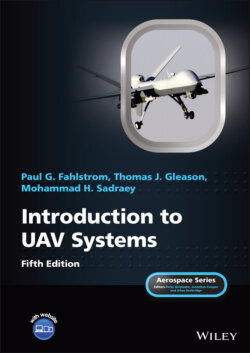Читать книгу Introduction to UAV Systems - Mohammad H. Sadraey - Страница 19
1.2.3 Resurgence
ОглавлениеAt the end of the Vietnam War, general interest in UAVs dwindled until the Israelis neutralized the Syrian air defense system in the Bekaa Valley in 1982 using UAVs for reconnaissance, jamming, and decoys. The Israeli Air Force pioneered several UAVs in the early 1980s. In 1982, United States observers noted Israel’s use of UAVs in Lebanon and persuaded the Navy to acquire a UAV capability. One of the early UAVs acquired by the Navy was the RQ‐2 Pioneer. It was developed jointly by AAI Corporation and Israeli Aircraft Industries and became a very useful air vehicle during Desert Storm for collecting tactical intelligence.
Actually, the Israeli UAVs were not as technically successful as many people believe, with much of their operational success being achieved through the element of surprise rather than technical sophistication. The air vehicle was basically unreliable and couldn’t fly at night, and the data‐link transmissions interfered with the manned fighter communications. However, they proved that UAVs could perform valuable, real‐time combat service in an operational environment.
The United States began to work again on UAVs in August 1971 when the Defense Science Board recommended mini‐RPVs for artillery target spotting and laser designation. In February 1974, the Army’s Material Command established an RPV weapons system management office and by the end of that year (December) a “Systems Technology Demonstration” contract was awarded to Lockheed Aircraft Company, with the air vehicle subcontracted to Developmental Sciences Incorporated (later DSC, Lear Astronics, Ontario, CA). The launcher was manufactured by All American Engineering (later ESCO‐Datron), and the recovery net system by Dornier of the then still‐partitioned West Germany. Ten bidders competed for the program. The demonstration was highly successful, proving the concept to be feasible. The system was flown by Army personnel and accumulated more than 300 flight hours.
In September 1978, the so‐called Target Acquisition/Designation and Aerial Reconnaissance System (TADARS) required operational capability (ROC) was approved, and approximately 1 year later, in August 1979, a 43‐month Full Scale Engineering Development (FSED) contract was awarded to Lockheed as the sole source. The system was given the name “Aquila” and is discussed in more detail at the end of this chapter. For a number of reasons that provide important lessons to UAV system developers, Aquila development stretched out for many years and the system was never fielded.
In 1984, partly as a result of an urgent need and partly because the Army desired some competition for Aquila, the Army started a program called Gray Wolf, which demonstrated, for the first time for a UAV, hundreds of hours of night operations in what could be called “combat conditions.” This program, still partly classified, was discontinued because of inadequate funding.
